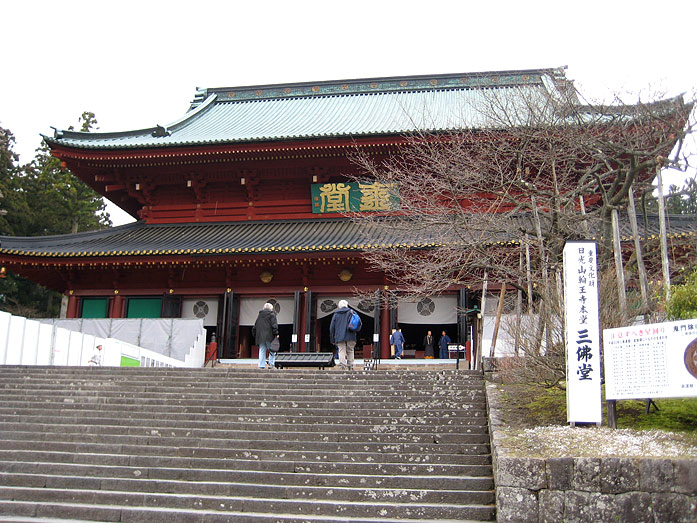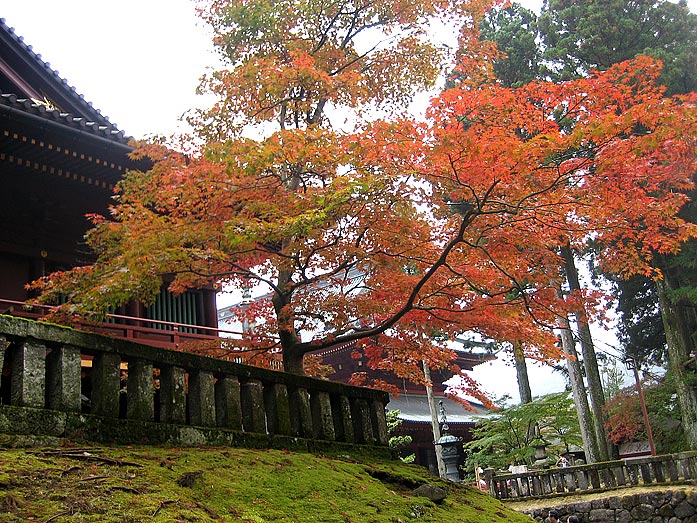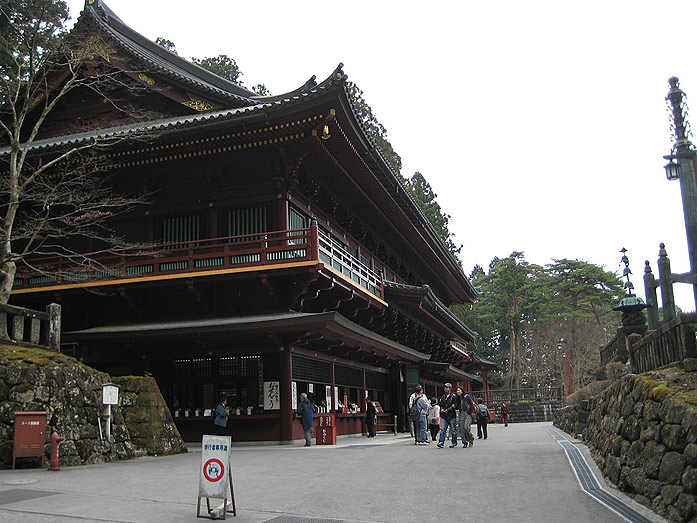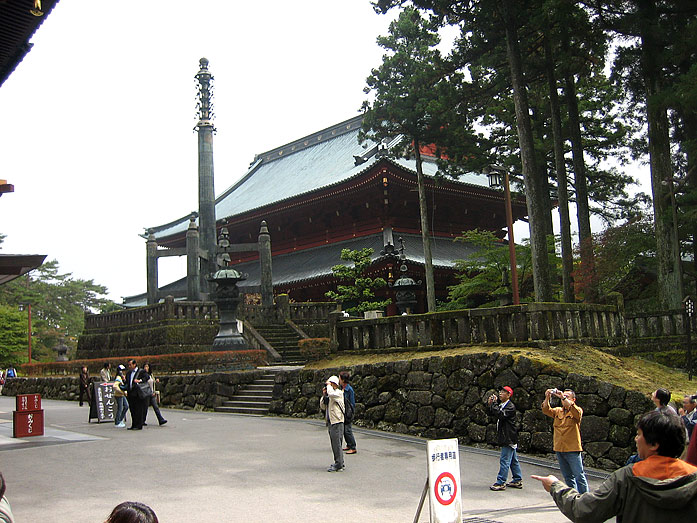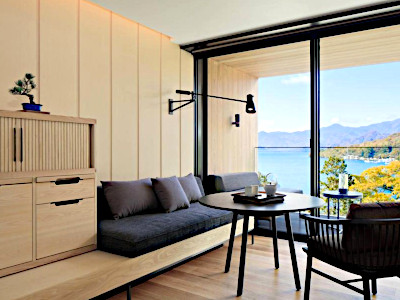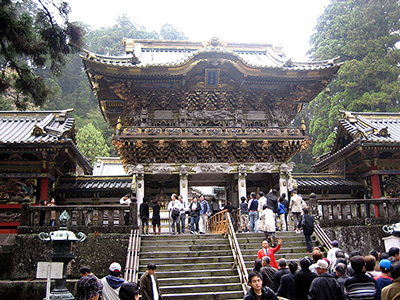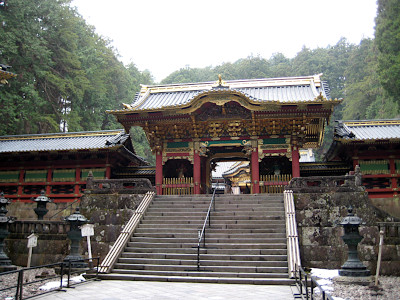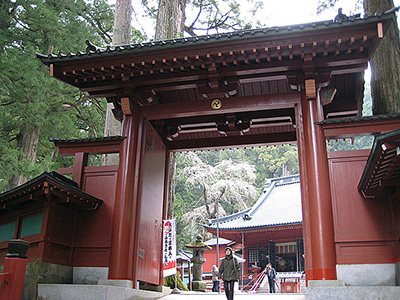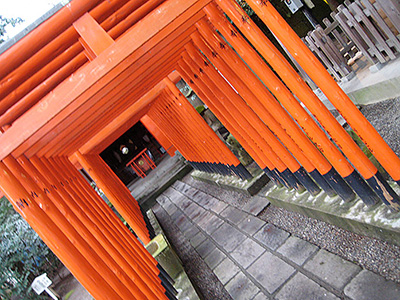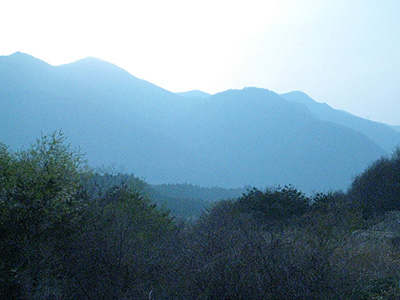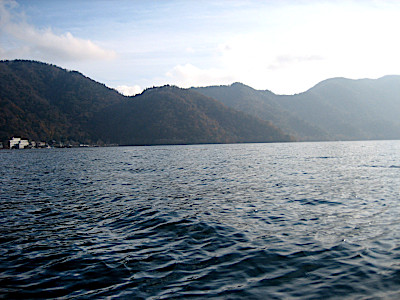Rinnoji Temple in Nikko
This post can contain affiliate links, which means that we may receive a small commission if you make a purchase using these links.
Facts & Figures
Rinnoji Temple is located in the Nikko National park and is part of Nikko's UNESCO World Heritage Sites. The temple complex consists of 15 Buddhist temple buildings all of which play an instrumental role in the history of the local area and Japan in general.
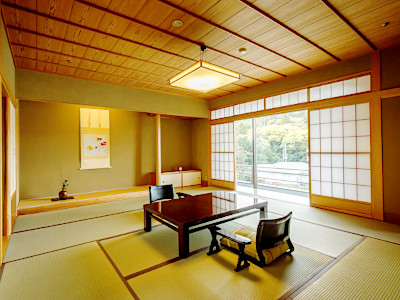 Best Places to Stay in Nikko >
Rinnoji Temple is best known for the three Budhha Hall or the Sanbutsudo, which features three humongous 8m tall gold-leafed wooden Buddha statues called Amida (Limitless light), Bato-Kannon (Kannon with a horse head) and Senju-Kannon (Goddess of mercy with a thousand arms). The temple complex is dedicated to these kami (gods) of the three mountains (Mt. Taro, Mt. Nantai and Mt. Nyoho) behind it. A must-see is also the impressive Japanese meditation garden or Shoyo-en Garden which covers an area behind the Homotsu-den Hall (treasure house). The garden is dating back to the Edo period (1603 - 1868) and is popular with visitors especially during fall season, because of its many maple trees that are arranged in an almost picture-perfect appearance. Autumn colors are particularly beautiful during the first half of the month of November.
Best Places to Stay in Nikko >
Rinnoji Temple is best known for the three Budhha Hall or the Sanbutsudo, which features three humongous 8m tall gold-leafed wooden Buddha statues called Amida (Limitless light), Bato-Kannon (Kannon with a horse head) and Senju-Kannon (Goddess of mercy with a thousand arms). The temple complex is dedicated to these kami (gods) of the three mountains (Mt. Taro, Mt. Nantai and Mt. Nyoho) behind it. A must-see is also the impressive Japanese meditation garden or Shoyo-en Garden which covers an area behind the Homotsu-den Hall (treasure house). The garden is dating back to the Edo period (1603 - 1868) and is popular with visitors especially during fall season, because of its many maple trees that are arranged in an almost picture-perfect appearance. Autumn colors are particularly beautiful during the first half of the month of November.
Outside the Sanbutsudo, the Sorinto pillar stands tall with a height of 13.2m. The pillar was made in 1643 at Shogun Tokugawa Iyemitsu’s request. The pillar was constructed to imitate the treasure tower that is situated on Mt. Hiei (near Kyoto) and is made completely out of bronze. As a side note a huge renovation project of Rinnoji will be finished in the end of 2019. You can still access the temple, but some scaffolding will hide parts of the building.
- Rinnoji Temple:
- Opening Hours - 08:00 am to 5:00 pm (from April till October, last entry 4:30 pm)
- Opening Hours - 08:00 am to 4:00 pm (from November till March, last entry 3:30 pm)
- Closed - never
- Admission Fee for Sanbutsudo - 400 yen (Adults)
- Admission Fee for Shoyo-en Garden and Treasure House - 300 yen (Adults)
My tips for local activities
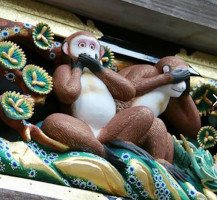
How about exploring the beautiful city of Nikko, its historical places, and the Kegon Falls within a day's trip from Tokyo with a local guide? The personalized tour by our partner GetYourGuide can take up to 10.5 hours. For more details check out this page >
History
In 766 Rinnoji Temple was erected by a Buddhist monk known as Shodo Shonin (735 - 817). Shodo Shonin explored various parts of Nikko during that time and founded also the nearby Futarasan Shrine. He is credited with introducing Buddhism to the Nikko area. To this day the temple is still used by Tendai monks as a ascetic training facility. During the Kamakura era (1185–1333), the Rinnoji Temple in Nikko was a place where the ruling class such as the Minamoto shoguns could gather to worship. In 1998 Rinnoji was registered a National Historic Landmark. And one year later in 1999 listed as a UNESCO World Heritage Site together with Toshogu Temple and Futarasan Shrine.
Location

Rinno-ji is located just next to the famous Toshogu Shrine in Nikko within the Tochigi Prefecture.
Address: 2300 Sannai, Nikko-shi, Tochigi
How to get to Rinno-ji?
- 10min from JR Nikko Station by bus or
- 45min from JR Nikko Station
Sightseeing spots at Rinno-ji
Top:
Sanbutsudo - The main building is housing lacquered statues of Amida, Senju- Kannon or Kannon with a thousand arms, as well as Bato-Kannon, or Kannon with a horse head. These three statues represent the three divine manifestations of Nikko. Hint: You can find infront of Sanbutsudo a 500 years old cherry tree.
Sorinto pillar - The bronze pillar is especially important to monks as it contains 1000 volumes of holy Buddhist sutras. The pillar is also a symbol of world peace as it is believed to purify the demon gate at the Nikko Toshogu shrine.
Statue of Shodo Shonin - This statue honors the huge influence he had during his lifetime in the Nikko region.
Dai-Goma-do (Great Hall of Homa) - Homa means a holy fire for invocation and it describes the Buddhist rite of burning cedar sticks on the altar.
Festival & Events in Nikko (dates can change without notice)
April
Yayoi Matsuri (16th - 17th)
The Mikoshi (portable Shinto shrine) procession will be held at the Futarasan Shrine.
May
Toshogu Shrine Grand Festival (17th - 18th)
The most important annual festival in Nikko includes a horesback archery and a procession of 1000 warriors. The festival is a re-enactment of the funeral procession of Tokugawa Ieyasu (1542-1616) who founded the Tokugawa Shogunate in Edo (Tokyo).
October
Toshogu Shrine Autumn Festival (16th - 17th)
Is an repetition of the festival in May.

